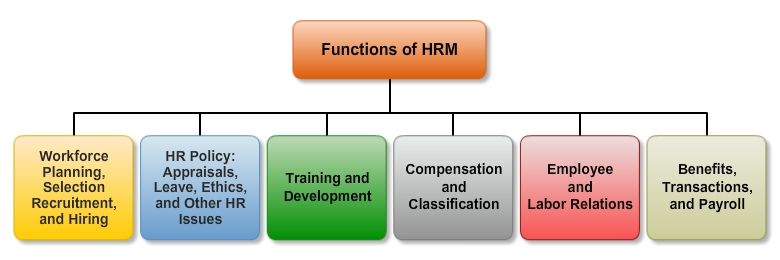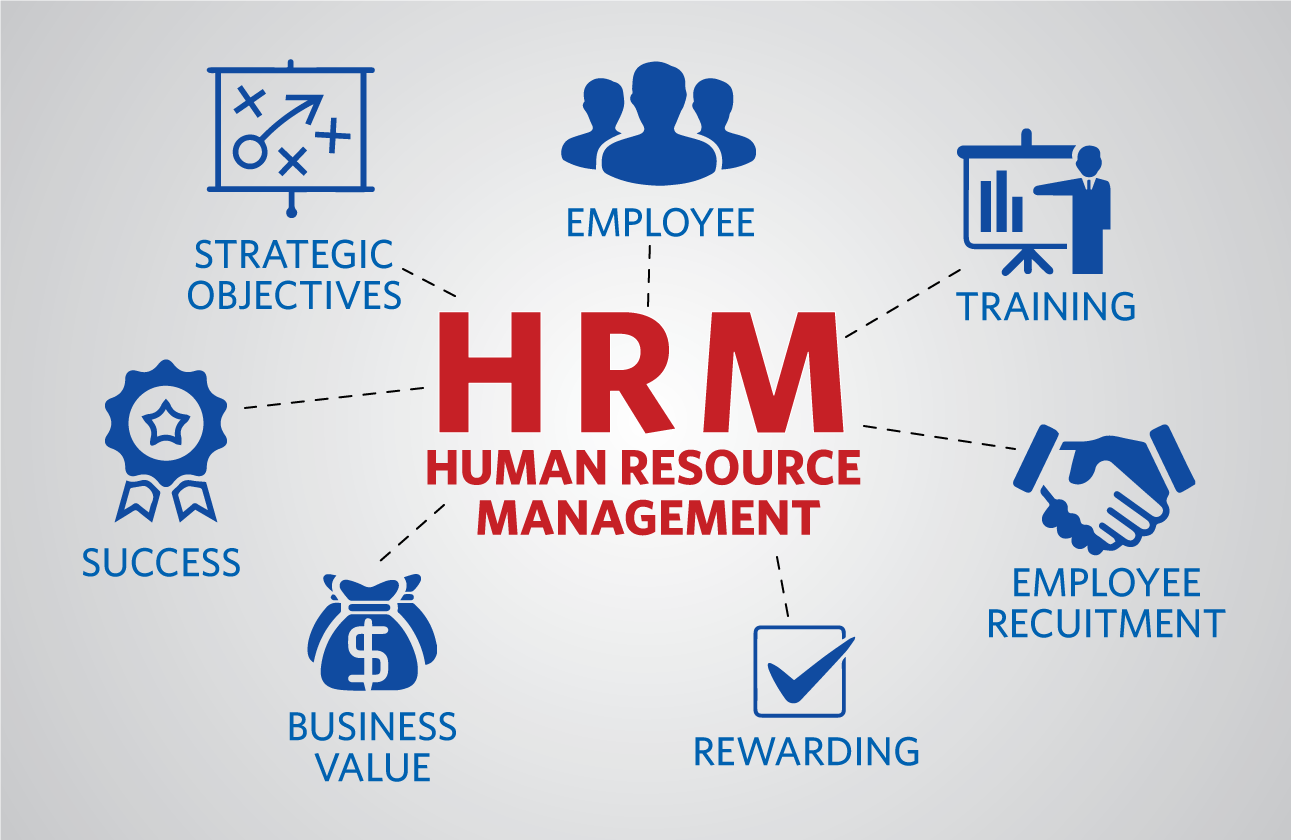Discussion About Human Resources And Policies

Human resources, which signifies the management and development of the workforce that is crucial for the success of any organization, operates across a broad spectrum, starting from the recruitment of employees to performance management, providing training and development opportunities, and enhancing employee job satisfaction.
In today’s business world, human resources departments not only fulfill the functions of personnel management but also take on the task of developing strategies that contribute to the achievement of the company’s strategic goals. These strategic roles include the establishment of a company culture, the promotion of diversity and inclusivity, ensuring employee well-being, and upholding the company’s ethical standards.
The discipline of human resources aims to recruit, develop, and sustain the right talents to maintain and enhance a company’s competitive advantage. Additionally, it encompasses ethical responsibilities such as ensuring compliance with labor laws and safeguarding employee rights.
Ultimately, human resources play a critical role in uncovering the potential of employees, who are the most valuable assets of a company, and in building a sustainable workforce. In this context, human resources departments emerged as a significant factor influencing the success of the company.
Key points to emphasize:
- The role of human resources departments in not only personnel management but also contributing to the achievement of strategic goals.
- The importance of fostering company culture, promoting diversity and inclusivity, ensuring employee well-being, and upholding ethical standards.
- The purpose of human resources is to attract, develop, and sustain the right talents to maintain and enhance a competitive advantage for companies.
- Emphasizing compliance with labor laws and the protection of employee rights.
A series of tasks and responsibilities that need to be known to develop human resource strategies.
Recruitment Process
Needs Analysis: The foundation of the recruitment process, needs analysis involves identifying the requirements of the position. This stage includes defining the job description, required skills, and the candidate’s fit with the company culture. It also determines what kind of skill set is needed to achieve the company’s future goals.
Job Posting: Job postings are crafted in an appealing and comprehensive manner, reflecting the requirements of the position and the values of the company. These postings are published on various platforms and job search websites to attract potential candidates. Additionally, they emphasize the benefits of the job, workplace culture, and career development.
Application Process: Candidates typically apply through online application forms or by submitting their CVs. The review of applications is based on criteria such as the candidates’ experiences, skills, and education levels. At this stage, the candidate’s motivation for the company and their fit for the job are also assessed.
Pre-Screening: This stage involves selecting the most suitable candidates from the pool of applications. Pre-screening is conducted based on the candidates’ application forms, CVs, and cover letters. It considers the candidates’ core skills and experiences, as well as their communication skills, teamwork aptitude, and adaptability.
Interview: Candidates are often invited for one-on-one or group interviews with the recruitment team or employers. Interviews are used to evaluate candidates’ technical knowledge and experiences, as well as to understand their communication skills, problem-solving abilities, and leadership potential.
Reference Check: Reference checks are conducted to gather information about candidates’ previous job experiences, performance, and character. This stage involves contacting the candidate’s former employers or colleagues to obtain detailed information about the candidate’s previous work performance and consistency.
Offer Stage: After identifying the most suitable candidates, the company presents them with a job offer. At this stage, the job terms, salary, benefits, and other details are discussed with the candidates to reach a mutual agreement. A transparent and fair presentation of the job offer can increase the candidate’s commitment to the company.
Onboarding: If the candidate accepts the job offer, the formal onboarding process begins. This stage involves providing the new employee with the necessary training and guidance to adapt to the company’s culture and work processes. Additionally, the new employee is encouraged to meet and communicate with colleagues and supervisors. This stage is essential for enhancing the new employee’s productivity and facilitating their integration into the company culture.
Onboarding (Integration of New Employees)
Onboarding is a critical process that facilitates the integration of new employees into the company and its workflows. This stage helps new hires understand the company culture, and expectations, and quickly adapt to the work environment. The onboarding process typically includes the following steps:
Welcome and Introduction: New employees are briefed on the company’s values, mission, goals, and work culture. This involves introducing them to their colleagues, understanding inter-departmental relationships, and providing an overview of the company’s general operations.
Training and Skill Development: New hires are provided with training and skill development programs necessary for them to effectively perform their roles. This enables them to gain in-depth knowledge about their duties, job processes, and company policies.
Mentoring and Guidance: New employees receive mentorship and guidance from an experienced employee or manager within the company. This helps them better understand workplace expectations, improve their job performance, and adapt to the company culture more quickly.
Performance Evaluation: As part of the onboarding process, the performance of new employees is regularly assessed. This helps identify their strengths, pinpoint areas for improvement, and provide feedback to help them perform better.
Feedback and Communication: New employees receive feedback on their performance. Additionally, the use of internal communication channels is encouraged, creating an environment where employees can ask questions, share their opinions, and make suggestions.
Effective onboarding enhances employee motivation, enables quicker and more efficient adaptation to the workplace, and contributes to the company’s long-term success.
Performance Evaluations:
Performance evaluations involve the systematic assessment of an employee’s job performance against predetermined criteria and goals. These assessments provide valuable insights for career development, identifying areas of improvement, and recognizing achievements.
Career Development and Training Programs:
Career development and training programs are designed to enhance employees’ skills, knowledge, and abilities. These initiatives support professional growth, preparing employees for future roles within the organization and contributing to overall workforce competence.
Employee Relations and Communication:
Employee relations focus on fostering positive relationships between employees and the organization. Effective communication strategies, transparent policies, and conflict-resolution mechanisms contribute to a healthy work environment and strong employee engagement.
Compensation and Benefits Packages:
Compensation and benefits packages encompass the financial and non-financial rewards provided to employees. This includes salaries, bonuses, health insurance, retirement plans, and other perks, aiming to attract, retain, and motivate a talented workforce.
Employee Health and Well-being Programs:
Employee health and well-being programs prioritize the physical and mental health of staff members. These initiatives may include wellness programs, mental health resources, and activities that promote a balanced and healthy lifestyle.
Occupational Health and Safety Policies:
Occupational health and safety policies establish guidelines and procedures to ensure a safe working environment. This includes measures to prevent accidents, handle emergencies, and comply with relevant regulations, fostering a culture of workplace safety.
Recruitment Policies and Standards:
Recruitment policies and standards outline the processes for attracting, assessing, and hiring new talent. This includes job posting strategies, interview procedures, and criteria for candidate selection, ensuring a fair and efficient hiring process.
Termination Procedures and Policies:
Termination procedures and policies define the steps and guidelines for ending an employment relationship. These policies ensure fairness, adherence to legal requirements, and clear communication during the termination process.
Diversity and Inclusion Initiatives:
Diversity and inclusion initiatives promote a workplace culture that values and respects differences among employees. These efforts strive to create an inclusive environment that embraces diversity in terms of race, gender, age, ethnicity, and other factors.
Promotion of Company Culture and Values:
The promotion of company culture and values involves communicating and reinforcing the organization’s core beliefs, mission, and vision. This fosters a sense of identity and shared purpose among employees.
Work-Life Balance Programs:
Work-life balance programs aim to help employees maintain a healthy equilibrium between their professional and personal lives. Flexible work arrangements, time-off policies, and support for family responsibilities contribute to improved work-life balance.
Business Processes and Productivity Improvement Initiatives:
Business processes and productivity improvement initiatives focus on optimizing workflows and enhancing efficiency. Continuous improvement strategies, technology adoption, and streamlined processes contribute to increased productivity.
Employee Feedback and Evaluation Systems:
Employee feedback and evaluation systems involve mechanisms for collecting, analyzing, and acting upon feedback from employees. Regular evaluations provide insights into employee satisfaction, performance, and areas for improvement.
Workplace Training and Education Programs:
Workplace training and education programs aim to develop employees’ skills and knowledge to meet current and future job requirements. These programs may cover technical skills, soft skills, and industry-specific knowledge.
